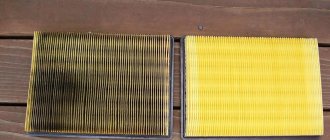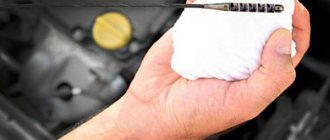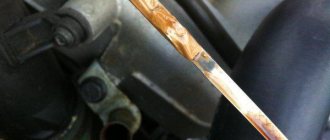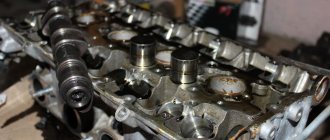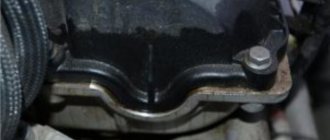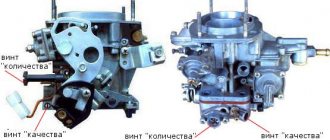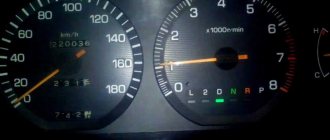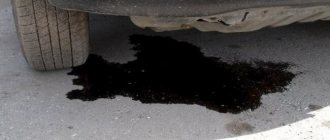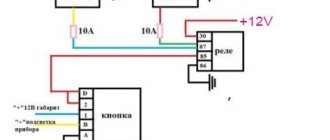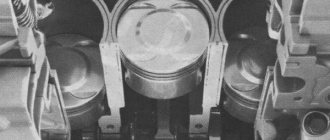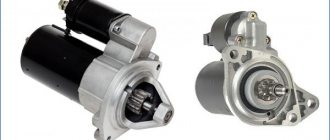For what reasons does oil leak from the gearbox? The answer to this question interests many motorists. Transmission oil leaks are one of the group of problems that almost every driver encounters at some point. Oil smudges appear under the car, which gradually increase.
The lubricating complex of a car is considered an important part of the vehicle. Its malfunctions lead to serious malfunctions. The friction of contacting parts becomes uncontrollable, wear products stop leaving the transmission, and the unit does not cool. This is unsafe and may cause a fire.
An oil leak from the gearbox is a serious problem. Even regular transmission lubricant comes with a hefty price tag.
Watching such an expensive product go down the drain is not easy.
To avoid drips, car manufacturers ensure the tightness of lubricant complexes. This allows the manual/automatic transmission to operate at high pressure. If the car oil is leaking, this indicates that the unit is faulty.
Why is oil dripping from under the car?
The most common cause is wear on the engine or pistons. During operation of the car, exhaust gases, bypassing the pipe, enter the crankcase, bypassing the piston rings. Accordingly, when the engine wears out, these gases create excessive pressure, as a result of which the oil is subjected to strong pressure and squeezed out of the container.
Why is oil dripping from under the car:
- Failure in the oil sensor area. This is a small device that shows how much oil is left in the container. To connect the measuring device to the system, several gaskets must be inserted. Failure of the gasket causes leaks and oil dripping.
- Oil filter . This usually occurs due to the filter weakening and space appearing between the bolts and the mesh. It is necessary to tighten the bolts further, sealing the filter, or replace it.
- Leaking seals. The main task of the oil seal is to seal, but it does not always cope with this task and often bursts or tears. It is for this reason that a small amount of liquid may leak out. The cost of the seals is low, however, you may need money for the work, since it is difficult to replace simple parts.
- Engine sump gasket leaking. It is necessary to replace the gaskets, or apply a sealant that is used in cars.
Flow
Measures to prevent oil leaks
It is impossible to completely protect your car from problems, but you can significantly reduce the likelihood of their occurrence. To do this, just follow a few simple rules:
- Constantly check the lubricant level with a special dipstick. Make it a habit to monitor the amount of engine oil every 5-6 days. This measure will allow you to recognize the presence of a problem before it becomes critical. Yes, all modern cars have a special sensor that informs the driver in case of oil leakage from the engine. But it is activated only when more than 300-500 ml is consumed.
- Maintain your vehicle regularly. This way you can promptly notice a damaged system element and replace it with a new one. In addition, regularly changing the oil fluid will prevent the formation of soot and sludge deposits, and increase the degree of protection of motor elements from excessive wear.
- Buy only products recommended by your vehicle manufacturer. Your vehicle's owner's manual contains information about the recommended engine oil viscosity. Compliance with these requirements will allow you to extend the life of the propulsion system. When choosing an oil liquid, pay attention to the design of the product and the quality of its container so as not to run into a fake. As for choosing a brand, you should rely on intuition. Many companies have a good reputation in the world market, but it is impossible to say unequivocally which oil is better - after all, each vehicle has its own requirements for fuels and lubricants.
- Do not load the engine if it has not been properly warmed up. Did you start the car in the cold and immediately decide to drive it? Then stock up on plenty of motor oil for regular top-ups. Thickened liquid circulates unevenly in a cold system, so pressing the gas pedal can cause it to be squeezed out of the system; To prevent oil from squeezing out, it is recommended to warm up the engine for 10-15 minutes.
- Buy only original spare parts. If you find the reason why oil is leaking from the engine or gearbox, immediately begin repairing the car. But when choosing new parts for the system, try to give preference to original spare parts. Their quality (as well as price) is much higher than that of their “Chinese” counterparts, which means they can last your engine longer. By the way, non-original spare parts may differ in size from the original ones, which in turn will affect the tightness of the structure.
- If it is not possible to carry out maintenance of the vehicle yourself, entrust the work to professionals. And not to “garage technicians,” but to service centers specializing in vehicle maintenance.
Oil is dripping from under the drain plug: reasons - what to do?
Leaking from the drain plug is a common problem, especially after the next oil change. The machine often heats up during operation, so if the oil is chosen incorrectly, its components may crystallize and a small amount of sediment will form, which will cause the plug to stick to the thread. To unscrew it, you need to break the thread or damage the plug. Therefore, in car repair shops, after changing the oil and screwing in the plug, leakage is often observed.
Oil is dripping from under the drain plug, reasons for what to do:
- Replacing the plug. Often the thread is broken on the pallet itself, in which case it is necessary to replace it. You can also replace the plug and cut a new thread. A new plug can be ordered from a turner, since its sizes are standard in car dealerships.
- The method for the lazy is to use a sealant, sealant . Sometimes tanganite is used for these purposes. This is a thread used to seal water and gas pipes. According to the technical specifications, it can withstand temperatures up to 130 degrees and quite high pressure, so it is quite suitable for these purposes. However, experienced motorists argue that this is not the best solution to the problem, since the thread can melt and lead to more serious consequences - replacing the pan.
Traces of oil
Why does car oil leak?
- Problems with seals. High pressure in the transmission constantly affects the seals, changing their condition. Wear of the oil seal leads to the appearance of a gap through which oil fluid leaks out of the automatic transmission/manual transmission. It is possible to get rid of gearbox oil leaks by replacing the oil seal. It is recommended to find out the cause of the increased compression and eliminate it.
- The input transmission shaft is subject to wear and backlash is formed. The gearbox needs to be dismantled and we need to think about how to fix the leak. Change the shaft, install a new lining. It all depends on the size of the backlash.
- Check all connection areas along the direction of the oil movement. Leaks can be detected by stains of lubricant. Replace the sealing element.
- Check that the cover of the hole through which the oil drains into the automatic transmission is tightly screwed on. Correct the special probe.
- A clogged breather can lead to increased compression in the unit. Having discovered this fact, dismantle the gearbox and clean the breather.
The breather must be clean
This list of probable causes of oil leakage is incomplete. Only the most common reasons are listed here.
How can you tell what type of oil is dripping from under your car?
The worst situation is if grease drips through the crankshaft or camshaft seal. In fact, these parts are quite inexpensive, but to replace them you will have to go through most of the car. If you carry out repair work not yourself, but at a car service center, it will cost a pretty penny. If oil is oozing from almost all holes, then with 99% probability we can say that the situation requires serious intervention. These are clogged crankcases, or worn pistons and cylinders. In this case, you will have to completely disassemble the components and replace the motor.
The car engine system is created in such a way that its components are connected using a large number of seals and gaskets. Therefore, if one of them fails, you can observe oil leakage.
How to tell what kind of oil is dripping from under the car:
- At the initial stage, it is advisable to find out which node is faulty. To do this, you need to determine what kind of lubricant is flowing. They differ in their composition, so the origin of the liquid can be determined using a simple experiment.
- Find the leak and place a large napkin or cloth. It is necessary that a few drops fall on the fabric. Now you need to put the napkin in plain water. If it is motor oil, then the liquid that was on the fabric will sink to the bottom in the form of a large, large drop. If it is transmission fluid, it will rise to the surface in the form of greasy, oily drops. Thus, you can decide whether the transmission system or engine parts need repair.
Traces of oil
Oil flows between the gearbox and the engine: why does this happen?
To better understand and quickly identify the problem, let's start with the features of lubricating fluids in gearboxes and internal combustion engines. The fact is that the operating conditions of the transmission and power unit are significantly different. For this reason, motor oil is poured into the engine, and special transmission oil is poured into the gearbox. For both the engine and the gearbox, the lubricant can have a mineral, synthetic or semi-synthetic base.
However, this is where the similarities end. Please note that these liquids differ greatly in their basic properties (viscosity) and chemical additive packages. This is due to the fact that in the engine lubricant is supplied to loaded components and parts under pressure, and to elements with lower loads it is supplied by splashing.
At the same time, the engine oil gets very hot, is subject to oxidative processes, etc. In most transmissions (except torque converter automatic transmissions), the mating parts are lubricated by splashing lubricant during rotation of the components; the load on the parts inside the transmission is much less compared to an internal combustion engine.
Such operating features also determine the overall service life of lubricants in each unit (on average, 10 thousand km for engine oil and 50-80 thousand for transmission oil). We also note that for each component, the vehicle manufacturer determines individual tolerances for viscosity and other lubricant parameters.
The viscosity of the engine or transmission oil is not suitable
Now let's get back to our main problem. It is quite obvious that if a leak between the gearbox and the engine appears immediately after switching from a “thicker” SAE oil to a low-viscosity lubricant (for example, mineral water was replaced with liquid synthetic), then there is a high probability of a banal discrepancy between the filled material and the recommended parameters.
If no other prerequisites for the occurrence of leaks have been identified, then it is appropriate to talk about a malfunction. In this case, analysis of the oil itself allows you to determine where it is flowing from, from the gearbox or engine. Let's take a closer look at this.
There is a malfunction in the internal combustion engine or gearbox: how to accurately determine
If the fluids poured into the engine and gearbox meet all the parameters, then an oil leak at the junction of the engine and gearbox is the result of a breakdown of one of these units. Less common, but quite possible, is the simultaneous occurrence of problems in both nodes at once.
As already mentioned, the lubricant in gearboxes and internal combustion engines differs in consistency, color and smell, which allows us to draw some conclusions. For primary diagnostics, this is very important, since it is possible to more accurately determine which unit is leaking and why. To do this, you need to carefully examine the streaks, color of the oil, dust and dirt on it.
To do this, the level is assessed using the dipstick; a decrease in the indicator will indicate problems with the motor. Let us add that the gearbox on some cars may also have its own oil dipstick. However, such a check allows you to accurately determine the problem unit when oil flows out intensively. In this case, you can usually also notice oil stains under the front of the car.
If only drips were found on surfaces and parts at the junction of the transmission and power unit, then the lubricant level does not always drop significantly. In such a situation, additional assessment of the leaking fluid helps.
Motor oil has a lighter reddish-amber hue, it is fluid, its smudges conditionally “absorb” dust and dirt. Transmission oil is usually darker and may have a reddish tint (ATF oil). This lubricant is thicker, has a characteristic pungent odor, smudges quickly become overgrown with a thick layer of dust, accumulating contaminants on its surface in the form of a “fur coat”.
Note that in practice the following method is also often used. Part of the leaking liquid must be collected in a container into which water has previously been poured. When motor oil enters water, it curls up, maintaining the shape of a drop, and then sinks down. The transmission fluid does not sink to the bottom, spreading across the surface in a spot.
How to determine an oil leak in an engine?
There doesn't have to be a puddle or obvious leak under the car.
How to determine an engine oil leak:
- Leakage may be minor, so the first thing that will appear on the surface of the part is greasy, dark, oily stains. In which zone they appear, you need to look for the problem there.
- A sign of an oil leak is dark, bluish smoke from the exhaust pipe. This means that oil enters the exhaust system and burns, emitting dark smoke.
Engine in oil
Oil flows between the engine and gearbox: diagnostics and repair methods
While operating the vehicle, the driver may notice an oil leak between the engine and gearbox. Let us immediately note that a similar malfunction appears on different cars, regardless of what type of engine (diesel, gasoline) and gearbox are installed.
In other words, oil leaks at the junction of the transmission and internal combustion engine on different cars, when the car has a manual transmission, a robotic gearbox with one or two manual transmission clutch discs, an automatic transmission with an automatic transmission torque converter, a continuously variable transmission, etc.
Next, we will talk about why an oil leak may appear between the power unit and the gearbox, as well as what the driver should do if there are visible leaks of fresh lubricant between the engine and gearbox, oil is actively running, or the lubricant on the parts is covered with dust (the leak is insignificant, there is fogging).
Oil spilled out of the box: reasons
The most common cause of leakage is the use of oil that is not suitable for the engine. That is why it is necessary to follow the labeling and adhere to the recommendations specified by the manufacturer. Too thin or thick oil can cause an increase in pressure in the system, so a significant amount of lubricant will be squeezed out through the seals.
Oil spilled out of the box, reasons:
- Excessive amount of lubricant . If the amount of fluid in the system increases, this causes excessive pressure and wear on the engine. Therefore, gaskets and sealing elements cannot withstand and begin to leak liquid.
- Long car downtime. If you do not use the car for a long time, the sealing elements may fail. If the car remains idle for a month, oil can drain into the crankcase, and seals, which are left without lubricant, dry out and crumble.
- Modern cars are equipped with a double crankcase ventilation system, so the first part operates under heavy loads and crankshaft speeds, and the second at idle. The equipment includes an oil deflector. This device prevents oil vapor from entering the engine. If this part becomes clogged, the operation is disrupted and the air filter and exhaust manifold are leaking. Therefore, during operation, the engine may begin to smoke.
- A ventilation valve that regulates exhaust gas pressure . If the device is open at idle, it closes smoothly with increasing speed. If the ventilation valve does not operate correctly, the mixture becomes too lean, causing engine interruptions.
- Sealing rubber tubes. Their main task is to remove large amounts of gases that enter the crankcase. If these ventilation elements become clogged with dirt, they contribute to the deterioration of the system's performance and become an impetus for breakage and failure of the gaskets. They begin to leak the oil mixture.
To check the ventilation system, you can perform a simple experiment. Remove the cap that is located near the neck where the oil is poured. Next, you need to attach a piece of cardboard or thick paper to this hole and start the car. The engine needs to start running. During operation of the system, the crankshaft rotation speed increases to 1000 rpm.
See what happens to a piece of cardboard. If, during the process of increasing speed, it is sucked in and fits tightly to the hole, this indicates a normal vacuum in the system and a decrease in pressure. When the pressure decreases, the cardboard seems to be pressed against the hole. If the ventilation does not work properly, then the required vacuum does not occur, and the cardboard does not stick to the hole in the drain cover.
Turbine leak
Tips and tricks
The appearance of malfunctions or noises clearly indicates both breakdowns and problems with the lubricant (insufficient or high level, loss of properties, non-compliance of the lubricant with tolerances and requirements, etc.).
For example, if the box hums in neutral, then the bearing on the drive shaft may fail or the transmission oil level may be low. If the problems are related to the synchronizer clutch or blocking element, then noise in the box appears when driving in a certain gear (usually in high gear, 3rd speed, 4th, etc.).
A hum from the box may also appear when the gearbox is loosened. Insufficient clutch pedal pressure or problems with this unit (especially on cars with a single-disc “robot” manual transmission) cause crunching, jerking, jolting, and difficult shifting. In this case, the parts experience increased loads, after which defects arise, and oil appears at the junction of the box and the engine.
In other words, it is possible to restore the tightness between the shafts and seals for some time. This allows you to get to the vehicle repair site on your own. So, we strongly do not recommend using such solutions both in the engine and in the gearbox.
First of all, the additive does not remove wear on parts, that is, the damage itself not only persists, but also progresses. Also, this method is not suitable for strong leaks. Moreover, the additive has a serious impact on the lubricant and on the parts themselves inside the assembly. Otherwise, adding an additive worsens the basic properties of the engine or transmission oil and clogs the engine and gearbox lubrication system.
A frequent result is that after disassembling the unit into which such additives were previously poured, it is discovered that it is completely unrepairable or there is significant wear not only on the initially problematic ones, but also on other structural elements.
Oil drips from under the filter: reasons - what to do?
A leak in the filtration area is one of the most harmless problems that can befall a car owner. The part is inexpensive, so you can easily replace the filter. Indeed, during the process of wear, a large amount of sediment and dirt is formed on the axle, which prevents the normal passage of oil through the filter. If a replacement has recently been made, then sealing problems should not be ruled out.
Oil is dripping from under the filter, reasons for what to do:
- It is possible that when replacing, the seal is not tightened, or the housing does not fit tightly if a collapsible structure was replaced. Thus, you just need to tighten the filter. This can be done using a plastic key.
- A prerequisite is the absence of effort. Under no circumstances should you overtighten, as this will cause the rubber seal to rupture, become deformed, and cause excessive oil leakage. Thus, instead of solving the problem, it can be made worse.
- Be sure to lubricate all gaskets with engine oil before tightening. They will become sticky and seal better. If you use dry seals, the fit will not be tight, resulting in deformation of the gasket or its distortion.
- In any case, if you notice a leak, you need to remove the filter and look at the integrity of the seals, and also evaluate the condition of the filter. Often there are defective parts on sale, so even after replacing the filter you should not be 100% sure that the machine will be repaired.
Under the car
Drive oil seal leak
Yesterday, when installing the crankcase protection, it was discovered that oil was barely oozing from the area of the right-hand drive oil seal (drive on the passenger side).
Further, the crankcase protection did not suit Alfeco. We came home, started looking at the topic on defenses, and discovered that this was not only happening to me. Unfortunately, I don’t remember the resources where I saw the photos. I forgot a little about this topic. I'll add a little and update. O.D. reported that in the letter from PMK it is written, as forum members say, that these are lubricant leaks when heated. Result: they wiped it and sprayed it with something, like a solvent or something. We measured the oil level, which is quite sufficient. In general, they refused to change it. Dealer Major 18km MKAD.
yeah, I know that, you can also see the drive there a little to the right, and it’s inside the boot, that’s the right side
This is the CV joint boot at the support bearing; the oil seal is located further, in the place where the shaft enters the box. In this area the fogging is most likely from the bearing.
Focus was taken in October 2011 at Ford-Omsk. My wife mostly drives, I spend a lot of time on shifts. In February 2012, the first maintenance was completed at 12.7 thousand kilometers. During the maintenance, a leak was discovered in the right gearbox oil seal, and a free replacement was carried out with topping up of transmission oil. Now attention! Last week she went from the Tobolsk business trip back to Omsk, having driven 100 km, first the fifth, then the fourth, etc. failed, in short, it was 600 km in tow to Omsk (fortunately they were traveling in pairs). The odometer says about 25 thousand, I’m not going to lie, I’m on shift myself, I haven’t seen the car yet. In general, in tow to the Ford-Omsk dealer. Let's drain the oil from the gearbox, but there are only drops there. In short, mine agreed to replace it with a new one without overhauling the old one. They practically didn’t argue, although they wanted to get to the bottom of the issue of a tugboat without a tow truck, but they changed the seal, and after that 13 thousand didn’t leave. In short, it’s a pity for the new cars. This is what I'm talking about in general: how seals can be changed. P/S Regarding the remarks, “the very level of failure”, I answer: yes, she should not have been doing this during the agreed intervals between the two, of course, during non-emergency operation.
P/S2 Today we called the dealer (he has had the car for exactly 2 weeks at the moment), they said the box is coming from Germany now at customs, and will soon be in Omsk.
2000 km, new oil seal is LEAKING! Hopes were not justified
! They installed that same thin oil seal for me. I’ll go to the dealer for the second replacement, but I still think that it’s not the seals that are the problem, but the design of the drive: diameters, seating depth, etc.
Source
Oil spilled while driving: reasons - what to do?
For many motorists, large amounts of oil leaking on the road is a nightmare. If this happens, the oil sensor shows a critical level and engine problems are displayed.
Oil spilled while driving, reasons:
- The plug is not closed during the oil change process, its fit is poor. While driving, during strong shaking on bad roads, the oil leaks out in full.
- Broken chain tensioner. It can fail, causing a leak. The part is inexpensive, most often it is the ring that fails.
- Replacement costs less than the services of a tow truck. A car service center will tighten the tensioner and replace the O-ring. The problem is common in both domestic and foreign cars.
Oil spilled out while driving, what to do:
- You cannot drive any further; you must immediately turn off the engine. After all, all systems in the engine cannot work without oil, this leads to their wear, the appearance of snags and nicks on the shafts, as well as engine parts.
- You need to call a tow truck and carry out diagnostics. The main causes of sudden oil leakage do not cause serious damage to the car if the engine is not running. The main task is to turn off the engine in time so that there are no serious consequences of running parts without oil.
Oil drops
Car enthusiasts can find a lot of interesting information on our website:
- What is the environmental safety class of a car: norms, requirements, legal restrictions.
- Composition of a first aid kit
- Which car is better, more comfortable, more economical for traveling with the family?
- How to correctly measure the oil level in a car engine: instructions, tips
Oil is a liquid that helps to wet all working surfaces and prevents them from heating. Therefore, if a leak is detected, it must be addressed immediately. A constant decrease in the amount of oil leads to wear of metal parts, which in the future can affect the performance of expensive parts.
Drawing conclusions
- Transmission oil stains on the garage floor are a good reason for a detailed inspection of the gearbox.
- The weak point of a gearbox with an impressive mileage is outdated seals.
- In the case of an automatic transmission, the cooling radiator fittings can also become capricious.
- A new car may have a defective crankcase or low-quality cuffs installed.
- When diagnosing malfunctions, it is imperative to check the cleanliness of the ventilation duct (breather).
We recommend: Installing and connecting a car subwoofer to a radio and amplifier
Oil leaks that can be easily fixed
There is a fairly wide range of reasons for oil leakage from the gearbox, which can be eliminated in the simplest ways. Even a person who has never held a wrench in his hands can perform such repairs with his own hands.
- The pressure nut on the gearbox drain cover is not tightly screwed on. It is enough to tighten it, pressing the lid tightly so that the leakage is eliminated.
- A loose reverse sensor causes the same consequences. Secure the sensor by tightening the fastener until it stops.
- The dipstick measuring the oil level is crooked or loosely inserted into the gearbox. It is necessary to correct its position, and the oil will stop leaking.
- The oil level in the box is too high (oil overflow). You should not fill transmission fluid above the maximum level, otherwise it will leak out and you will waste some of the expensive oil.
But the problem is not always solved in such simple ways. There are malfunctions that require some effort to eliminate.
How to replace gearbox seals
At the same time, as practice shows, if the gearbox has not experienced shocks, and the wear of the unit itself is not too great, then most often the culprit is the gearbox seals. Below we will look at how to replace them.
Often the seals (cuffs) in the gearbox are placed on the input shaft, there are also axle shaft seals, and there is also a gear selector rod seal. To replace drive shaft seals, you will need:
- drain the oil from the gearbox;
- Unscrew the wheel bearing nut and the ball joint bolts;
- Next you need to move the steering knuckle towards the side;
- dismantle the axle shaft and remove the old oil seal (removed with a flat-head screwdriver);
Then you can begin installing new axle seals. In this case, you should pay attention to certain nuances. First of all, the left and right cuffs differ in the direction of the oil grooves. The arrow on the right oil seal is clockwise, while the arrow on the left is in the opposite direction.
Before installation, the working surface of the oil seals must be separately lubricated with oil, and the installation itself must be performed by carefully and lightly hitting the spacer (mandrel) with a hammer.
If oil leaks as a result of wear of the cuff of the gear selector rod on machines with a manual transmission, then the oil seal is replaced as follows:
- at the initial stage, you need to unscrew the screw securing the gear shift drive hinge, then disconnect the element from the rod;
- then the protective cover of the hinge is removed, the oil seal is removed with a screwdriver;
- then you will need to install a new cuff, striking through the spacer, while the oil seal must first be lubricated with oil.
We also note that often experienced owners of cars with front-wheel drive, if this is possible, recommend additionally installing one or two more similar oil seals on top of the gear selector rod oil seal, between which a layer of sealant is placed.
To change the drive shaft oil seal, the gearbox itself must be removed. Often in this case, owners simultaneously change the car’s clutch. At the same time, the shaft is checked for play, the condition of its seating surfaces, bearings, etc. is assessed.
To gain access to the oil seal, you need to remove the release bearing bushing. The oil seal is removed with a special hook, and installation is performed by tapping it with a hammer through a mandrel.

